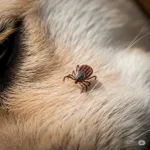
India is home to a vast and diverse population of animals, both domesticated and stray. With millions of stray dogs and cats living on the streets, overpopulation poses a significant challenge. Despite numerous efforts by animal welfare organizations, the population of homeless animals continues to grow due to a lack of awareness about the importance of spaying and neutering. Educating pet owners about this crucial aspect of responsible pet care can help address animal overpopulation and improve the well-being of pets across the country.
Understanding Spaying and Neutering
Spaying refers to the surgical procedure performed on female animals to remove their ovaries and uterus, preventing them from reproducing. Neutering, or castration, is the procedure done on male animals to remove their testicles, rendering them sterile. Both procedures are conducted by qualified veterinarians under anesthesia and have become routine practices worldwide due to their numerous health and behavioral benefits.
Why Spaying and Neutering Matters in India
- Controlling Overpopulation One of the primary reasons for spaying and neutering is to control the population of dogs and cats. In India, countless animals roam the streets without homes, adequate food, or medical care. These animals often suffer from disease, injury, or starvation. By sterilizing pets, the number of unwanted litters is reduced, thereby lowering the population of strays over time.
- Improved Health and Longevity Spaying and neutering offer significant health benefits for pets. Spaying female animals before their first heat cycle drastically reduces the risk of uterine infections and breast cancer, which can be life-threatening. Similarly, neutering male pets prevents testicular cancer and decreases the risk of prostate problems. Overall, sterilized pets tend to live longer, healthier lives compared to unsterilized ones.
- Behavioral Benefits Sterilizing pets can lead to more manageable and better-behaved companions. Neutered male dogs and cats are less likely to roam in search of mates, reducing the risk of accidents and injuries. They also tend to exhibit fewer aggressive behaviors and are less likely to mark their territory by spraying urine. Spayed females do not go into heat, which means pet owners won’t have to deal with unwanted attention from male animals or behavioral changes associated with the reproductive cycle.
- Ethical Responsibility and Compassion As pet owners and animal lovers, it is our responsibility to ensure that animals lead happy and healthy lives. Allowing unplanned breeding contributes to the cycle of abandonment and suffering. By spaying and neutering our pets, we demonstrate compassion and take an ethical stance in reducing the burden of stray animal populations.
Addressing Common Misconceptions in India
Despite the benefits, many pet owners in India are hesitant to spay or neuter their pets due to cultural beliefs, myths, or lack of information. Let’s address some common misconceptions:
- Myth: Animals should have at least one litter before being spayed. Fact: There is no health benefit to allowing an animal to have a litter before spaying. In fact, spaying before the first heat cycle offers the best protection against reproductive health issues.
- Myth: Sterilization will make pets lazy or overweight. Fact: While sterilization may reduce a pet’s energy levels, proper diet and regular exercise will prevent weight gain. Laziness is often a result of poor lifestyle habits rather than sterilization.
- Myth: Spaying and neutering are unnatural and cruel. Fact: Spaying and neutering are medically safe procedures performed by trained professionals. The pain associated with the surgery is temporary and manageable, and the long-term health benefits far outweigh any short-term discomfort.
- Myth: Male pets don’t need to be neutered because they don’t give birth. Fact: Neutering male pets is just as important as spaying females. Neutered males are less likely to engage in aggressive behaviors and contribute to the problem of unwanted litters.
The Role of Animal Welfare Organizations in India
Several organizations across India work tirelessly to promote spaying and neutering programs. They offer low-cost or free sterilization services, conduct awareness campaigns, and rescue and rehabilitate stray animals. These initiatives not only help control the stray population but also educate communities about humane animal care.
Some notable organizations include:
- Blue Cross of India: Based in Chennai, this organization conducts sterilization drives and provides veterinary services.
- People for Animals (PFA): With chapters across the country, PFA focuses on animal welfare, including sterilization programs.
- The Welfare of Stray Dogs (WSD): Operating in Mumbai, WSD is dedicated to sterilizing and vaccinating stray dogs to control their population humanely.
Government Initiatives and Support
The Indian government has also recognized the importance of controlling the stray animal population. The Animal Birth Control (ABC) program, launched by the Ministry of Environment, Forest and Climate Change, aims to sterilize and vaccinate stray dogs to manage their population and reduce the incidence of rabies. Continued support and funding for such programs are essential for their success.
How Pet Owners Can Contribute
- Spay and Neuter Your Pets: The simplest and most impactful action pet owners can take is to sterilize their pets. Consult with a trusted veterinarian to determine the appropriate time for the procedure.
- Adopt, Don’t Shop: Adopting pets from shelters rather than purchasing from breeders helps reduce the number of homeless animals.
- Support Local Animal Welfare Organizations: Contribute time, money, or resources to organizations working for animal welfare and sterilization programs.
- Educate Others: Spread awareness about the benefits of spaying and neutering and encourage fellow pet owners to make responsible choices.
Preparing for the Procedure
Before scheduling a spay or neuter surgery, ensure your pet is healthy and up-to-date on vaccinations. Follow your veterinarian’s pre-surgical instructions, which may include fasting your pet for a few hours before the procedure. Post-operative care is crucial; provide a quiet, comfortable space for your pet to recover and monitor for any signs of infection or complications.
Conclusion
Spaying and neutering are vital components of responsible pet ownership in India. These procedures not only improve the health and behavior of pets but also play a critical role in controlling the stray animal population and promoting a compassionate society. By making informed and responsible decisions, pet owners can contribute to a healthier environment for animals and humans alike. It’s time to break the cycle of overpopulation and suffering—one pet at a time.



Leave a Reply